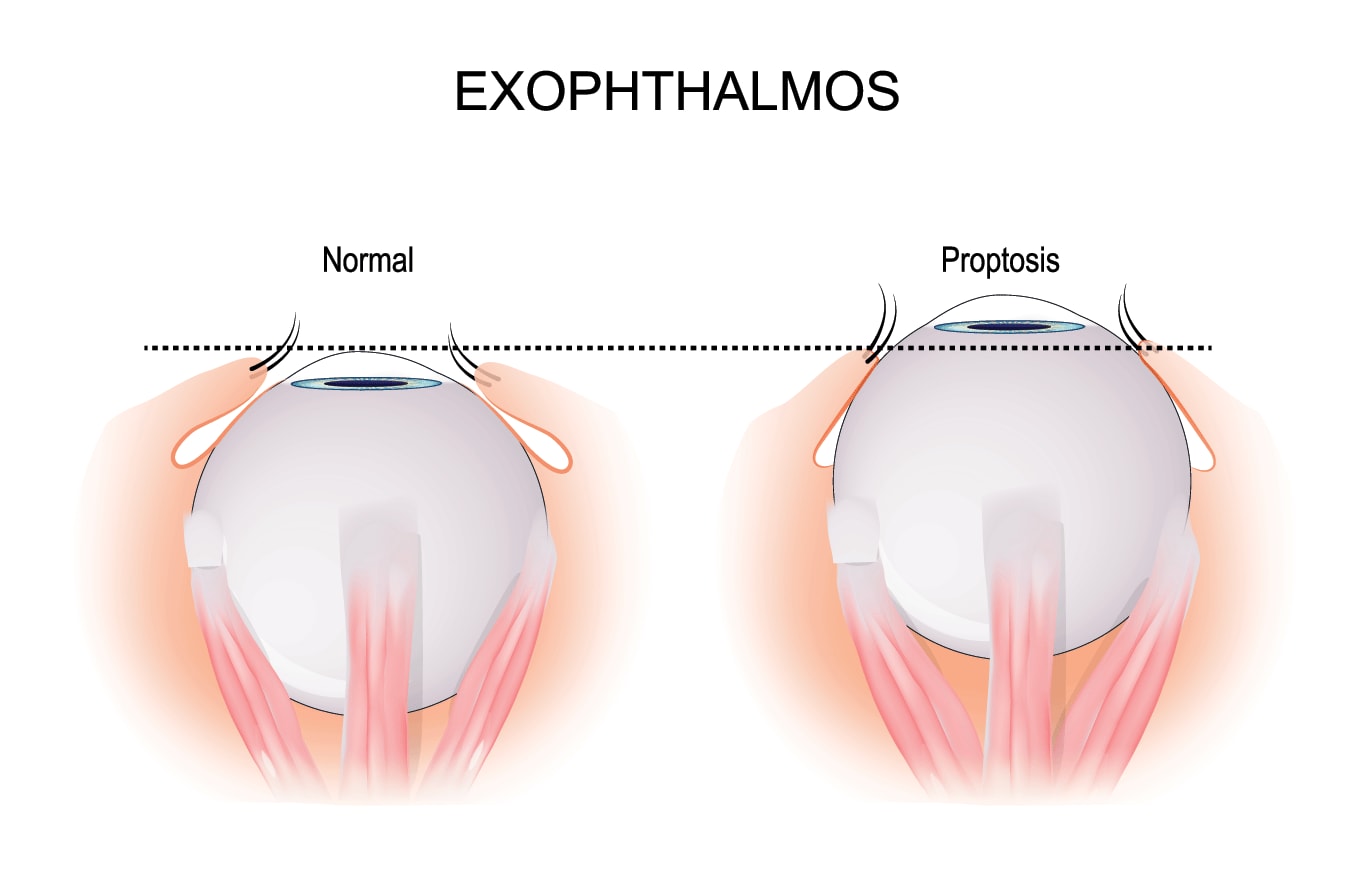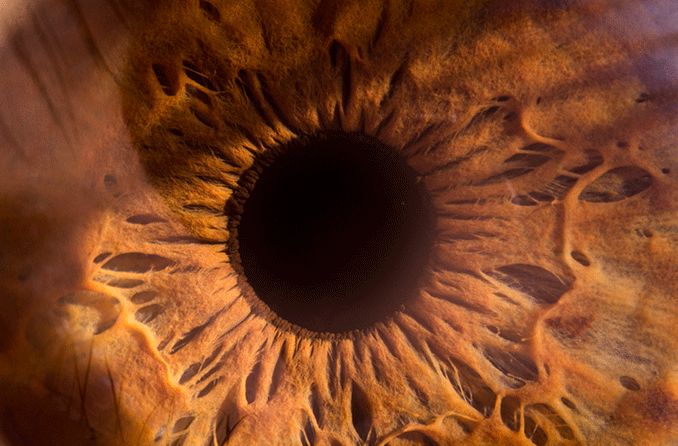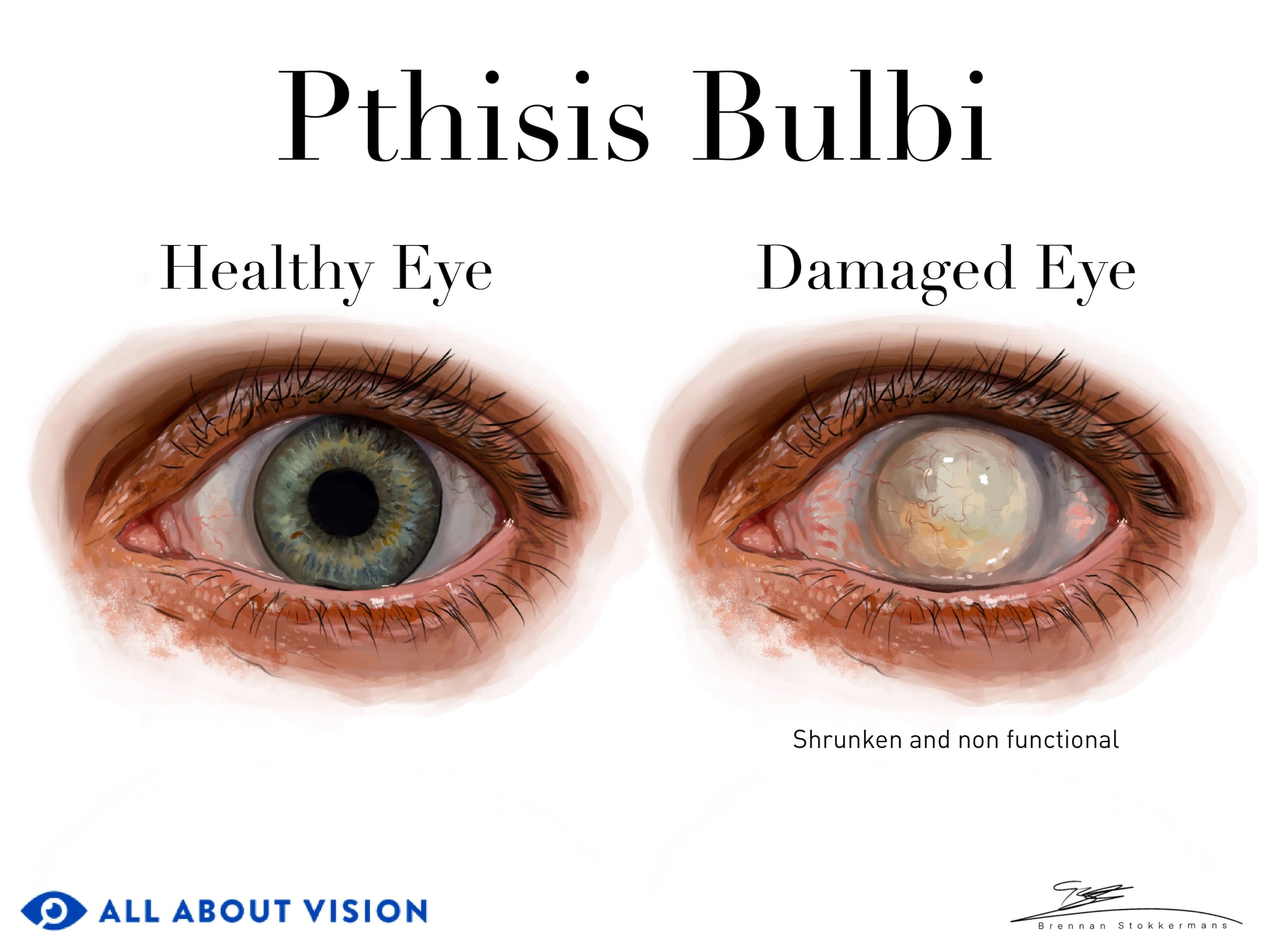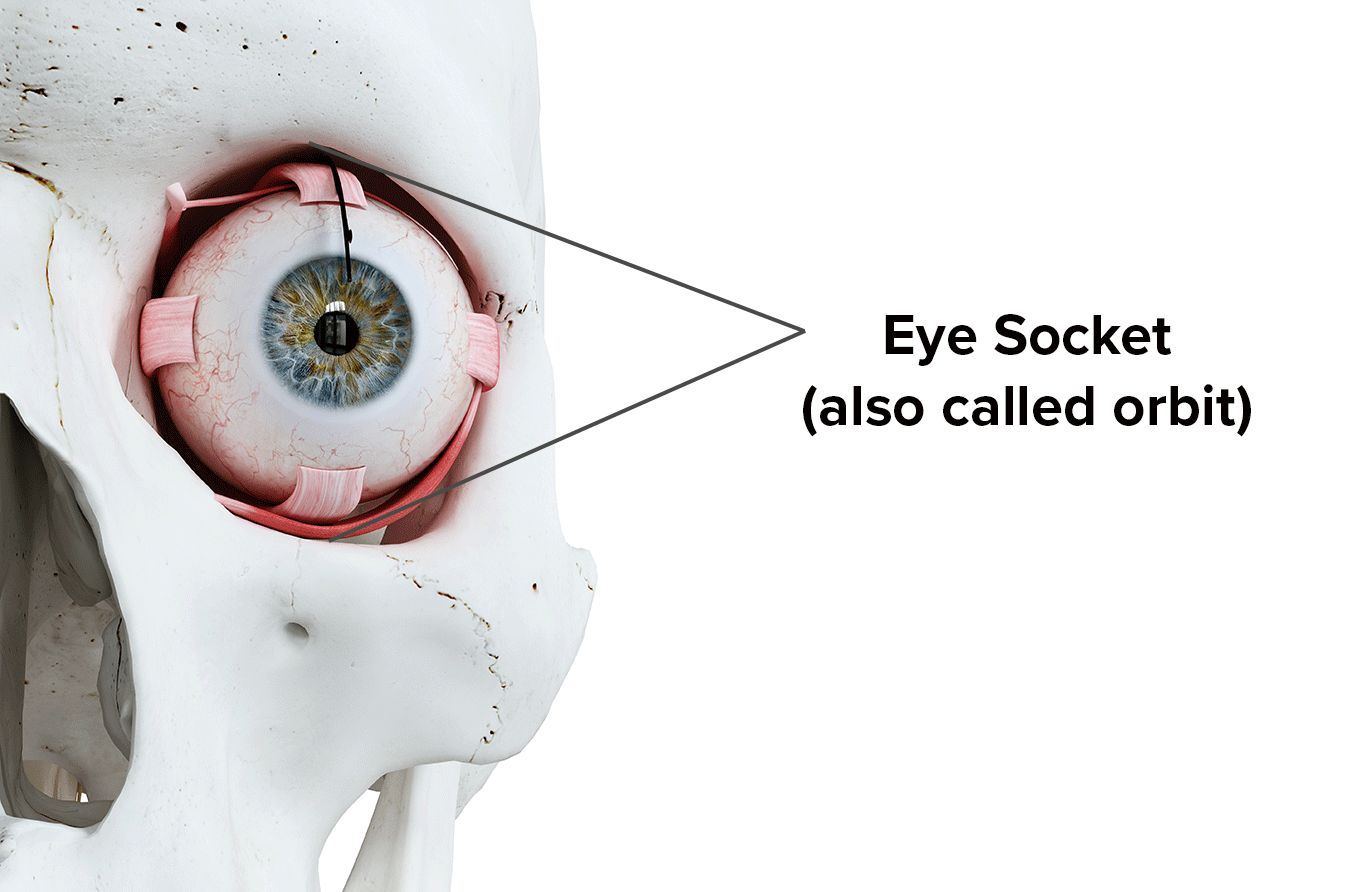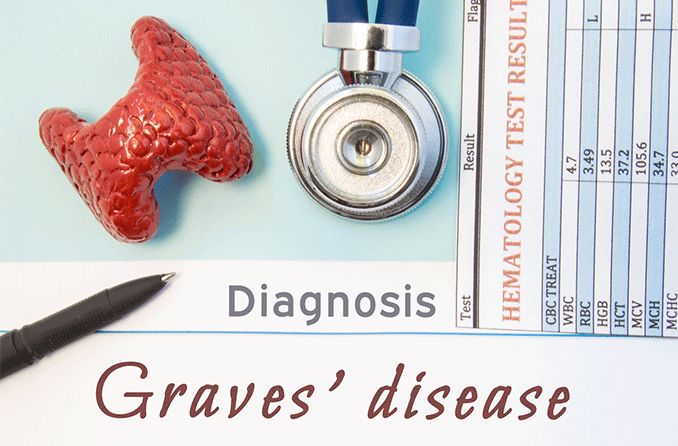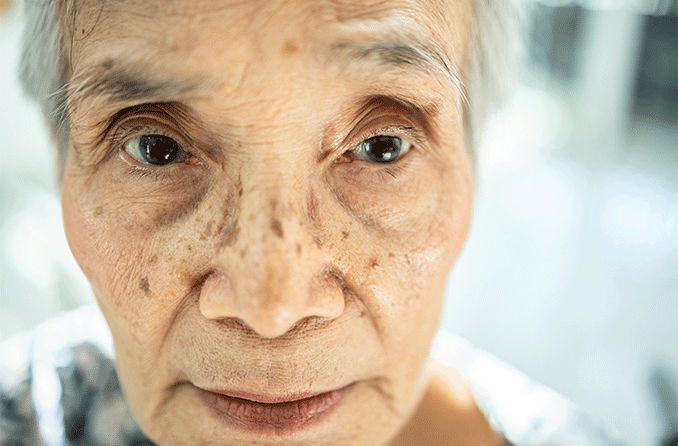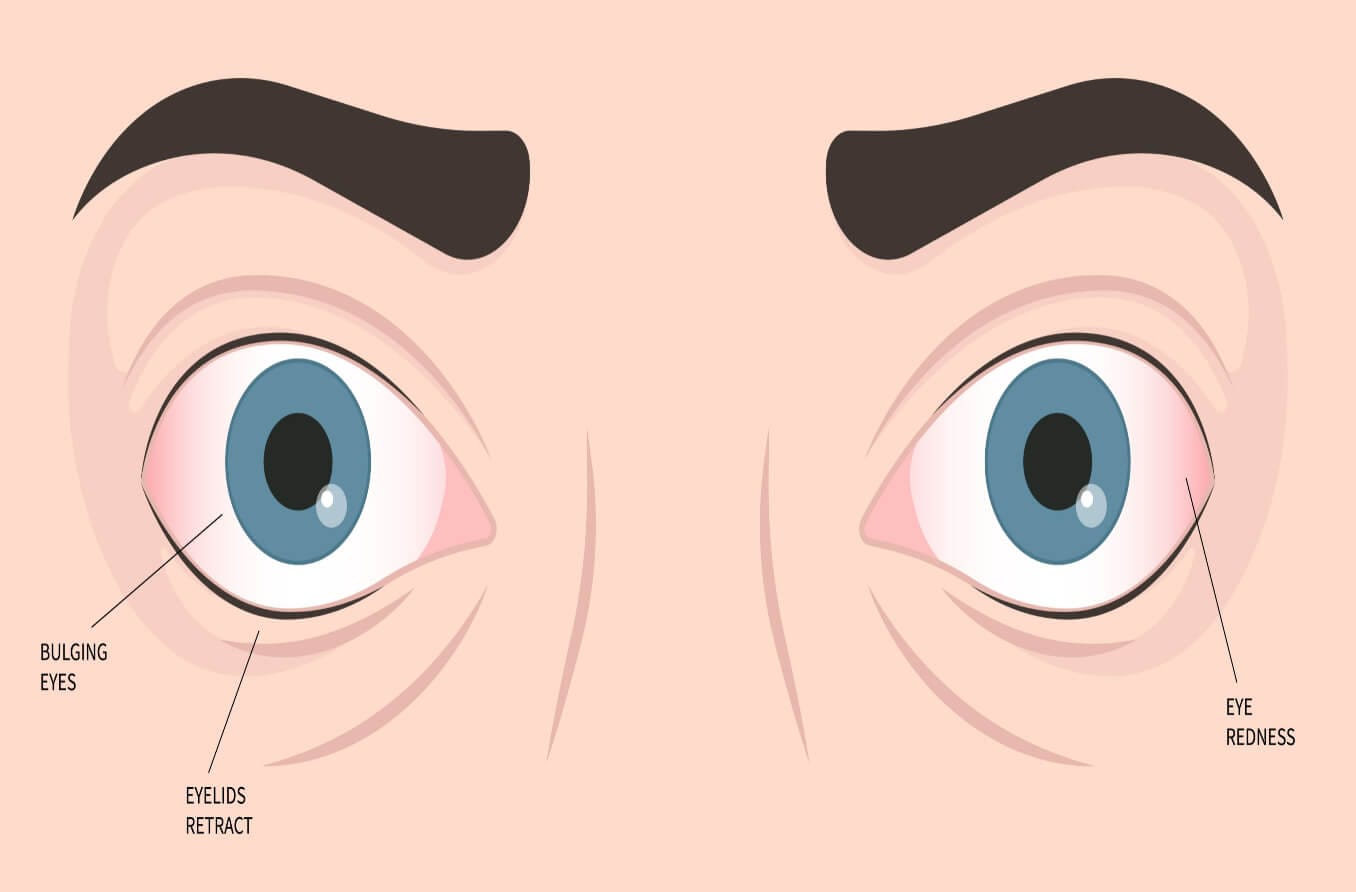Exophthalmos is the medical term for bulging eyes. It usually occurs when the tissues in the eye socket swell and push the eyeball forward. If the white of your eyes is visible above the iris (the colored part), that’s a good sign that your eyeballs are starting to bulge.
Your eye sockets are lined with muscles, nerves, tissues and fat cells designed to keep your eyes where they belong. If anything moves an eye out of its natural position, something is definitely wrong. The most likely explanation is trouble in your thyroid gland, but many other things could be happening.
Keep in mind that exophthalmos is neither a condition nor a disease. It’s a symptom of changes in the body affecting the size of the eye sockets. It can be a clue to serious problems like tumors or leukemia. It might be the result of an infection or an injury.
Whatever the issue is, your doctor needs to figure it out. Let’s walk through the basics of bulging eyes.
Defining exophthalmos
Exophthalmos (pronunciation: eks-ahf-THAL-muhs)comes from the Greek word for “the eye” (“ophthalmos”)and the prefix “ex” (“out of” or “away from”). You might also hear it called proptosis.
Either way, it means the eyes have moved away from their normal position. Sometimes, the eye might bulge up, down, or to one side, but usually the movement is forward from the back of the eye socket. Exophthalmos can happen to one eye or both of them. A single bulging eye is considered more dangerous, particularly if it happens to children.
SEE RELATED: Axenfeld-Rieger syndrome and Apert syndrome
Causes of exophthalmos
A wide range of diseases and conditions can cause bulging eyes. The two most common are hyperthyroidism and Graves' disease. We’ll look at these first and then explore less-common causes like infections, injuries, tumors and cancers.
Hyperthyroidism
The thyroid is a gland in your neck that has one of the most important jobs in the endocrine system, which produces hormones that help the body control things like growth and metabolism. Thyroid hormones tell the body how to metabolize food, converting it into energy. Metabolism helps keep you alive, which makes thyroid function incredibly important.
Unfortunately, the body’s immune system, which helps fight infections, can sometimes get off track and attack the thyroid. The thyroid responds by producing even more hormones — many more than the body needs. Doctors call this overproduction, hyperthyroidism. (Hypothyroidism is the opposite problem: The thyroid isn’t producing enough hormones).
Hyperthyroidism can cause inflammation and swelling in the tissues of the eye sockets. There’s not much room to maneuver in the eye socket, which is surrounded by bone on the top, bottom and rear. When eye socket tissues swell, there’s usually only one direction for an eyeball to go: forward. This movement causes eye bulging.
Hyperthyroidism causes about 90% of thyroid eye disease cases.
Graves' disease
Most cases of hyperthyroidism result from Graves' disease, an autoimmune reaction that causes the thyroid to overproduce hormones. The condition specific to vision is called Grave’s eye disease.
These are the most common symptoms of Graves' eye disease:
Eyes feel irritated or gritty
Whites of the eyes are red or inflamed
Eyes are dry, producing excess tears
Eyelids become swollen
Eyes feel sensitive to light
Eyes produce double vision
Eyes bulge
If the eye disease worsens, movement of the eyeballs and eyelids might decrease. Sometimes the eyes won’t close all the way. This can cause ulceration of the cornea and optic nerve compression. Vision loss could happen, but this is rare.
Other causes of exophthalmos
Bulging eyes also may be evidence of:
Glaucoma, which is the result of excess pressure in the eyeball that damages the optic nerve
Periorbital cellulitis or orbital cellulitis, an infection in the eyelids or tissues near the eye
Hemangioma, an excess of blood vessels seen in small children
Histiocytosis, an excess of a specific kind of white blood cell
Leukemia, a cancer in the tissues that create blood cells
Neuroblastoma, a rare nerve cancer
Recreational drug use, such as cocaine
Rhabdomyosarcoma, a malignant tumor of muscle attached to bone
Pfeiffer syndrome, a rare genetic disorder that affects the skull, face and eyes.
Occasionally, an injury or surgery may trigger bleeding in the tissues near the eye, causing an eye to bulge.
Because so many eye-bulging cases relate to thyroid function, it’s tempting to think there’s little need to worry about these other diseases. The trouble is, many of them pose serious health hazards, so you need your doctor to diagnose the problem and begin treatment.
RELATED READING: Globe luxation (when the eyeball protrudes or "pops" out of the socket)
Treatment of exophthalmos
Treating bulging eyes starts with an assessment. Your eye doctor will ask you a series of questions, including:
When did the bulging start?
Is it happening in one eye or both?
Are things getting better or worsening?
Are your eyes experiencing other problems like dryness, excessive tearing, irritation, pain or vision loss?
Are you feeling symptoms of hyperthyroidism? (These include low tolerance for heat, increased perspiration, uncontrolled shaking, anxiety, increased appetite, weight loss and diarrhea).
Your eye doctor also will scan the surface of your eyes for signs of trouble. Red, irritated eyes are the first clues that something’s amiss. Because Graves' disease and hyperthyroidism are the most likely issues, your doctor will also check for symptoms such as extreme readings in your pulse or blood pressure, or swelling in the neck near your thyroid gland.
Your doctor may also order an ultrasound to look for signs of tissue swelling. You might need a computed tomography (CT)scan, which helps the doctor identify abnormalities in the tissues of your eye socket. Magnetic resonance imaging (MRI)can identify sources of swelling and inflammation in soft tissues.
Treatment begins with the basics: applying lubricating eye drops to keep the eyes moist and prevent damage from dryness. But your doctor also has to treat the underlying causes. These treatments may include:
Quitting smoking. Cigarette smoking is often linked with exophthalmos, so kicking the habit (if you have it)is one of the first things doctors recommend.
Addressing thyroid problems. Corticosteroids may be prescribed to reduce inflammation and swelling.
Fighting infections. Antibiotics or antivirals might be prescribed.
Surgery. A tumor may require an operation if it’s possible.
Radiation or chemotherapy. If cancer is the culprit, these treatments might be ordered.
When to see an eye doctor
Eye bulging often develops so slowly that you won’t even notice. It might show up in a selfie or a family portrait. A family member, friend or co-worker might ask you about it.
These are the first signs of trouble. If you also start feeling eye pain or running a fever, it’s definitely time to contact your doctor.
Indeed, any sudden or gradual change in your vision warrants a visit to your eye doctor. As exophthalmos becomes more apparent, much more than your vision could be at stake.
READ NEXT: Small eye syndrome (microphthalmia)
